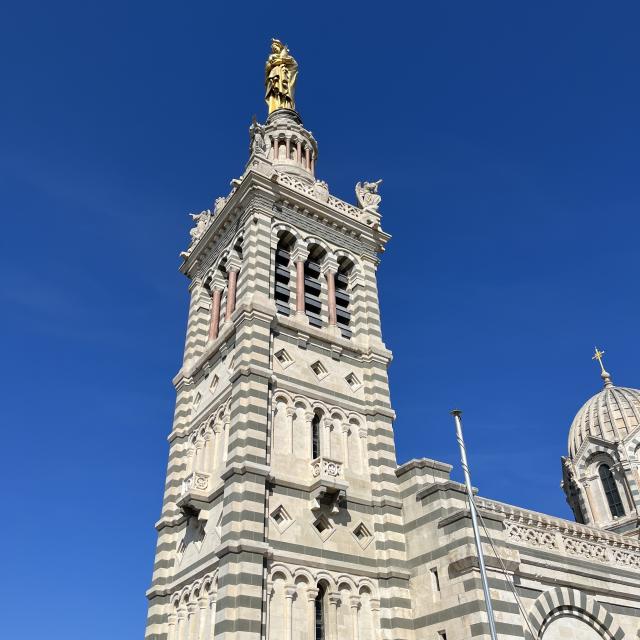The cultural diversity of Marseille
The historical and architectural heritage
Perched at nearly 150 meters above the sea level, the basilique Notre-Dame de la Garde overlooks the city. Nicknamed the Good mother by the residents, she watches over fischermen, sailors and inhabitants. This Roman-Byzantine inspired church is the emblematic monument of Marseille, it is visited by millions of people every year. The climb may seem difficult, but the extraordinary panorama over the whole city is well worth it. Accessible on foot or by car, you can also take the little train from the port, petit train au départ du port.
A true jewel of Roman-Byzantine architecture, the cathédrale de la Major is located in the 2nd arrondissement of Marseille near the Vieux-Port. Classified as a historic monument in 1906, this building with its two-tone facade impresses with its size, its architecture and the materials used inside.
Dating from the sixteenth century and located on the island of If, one of the islands of archipel du Frioul, and château d’If is a fortress built at the request of François Ist. Its primary function was to protect the port of Marseille, but having never suffered attacks, it became a prison from which it was impossible to escape. Famous prisoners suceeded one another, like Mirabeau or the General Kléber, but his reputation was forged following the writing of the roman Count of Monte Cristo by Alexandre Dumas in which the main character is locked in a cell of the castle.
The palais Longchamp is a monument built to bring water into the city. Inaugurated in 1869, it features animal sculptures and an impressive fountain. It houses in the left wing the Museum of Fine Arts and in the right wing the Museum of Natural History. Composed of a park, it is tne favorite place of the residents in search of tranquility.




Museums accessible to all
Inaugurated in 2013, the Mucem hosts permanent and temporary exhibitions and offers a wide range of artistic and cultural programming. The museum is located on the Esplanade du J4, next to the Vieux-Port. Its distinctive architecture, covered in a concrete mesh, makes it an emblematic and recognizable building. Its roof terrace offers a breathtaking view of the Mediterranean and provides access via a footbridge to the gardens of the fortress, fort Saint-Jean.
Musée des Docks romains dedicates a permanent exhibition to the ancient maritime trade. It is home to a number of Roman archaeological remains, such as vases, amphorae and fittings. The museum preserves the in situ remains of an old and former port warehouse. It bears witness to the city’s maritime history.
Villa Méditerranée welcomes since June 2022 the reproduction of the Grotte Cosquer discovered by Henri Cosquer in 1985, in the Calanques near Morgiou. Embark on autonomous modules to explore the prehistoric cave reproduced identically on nearly 2000m2. The visit continues before the projection of an unpublished documentary that traces the history of the discovery of the cave.
















